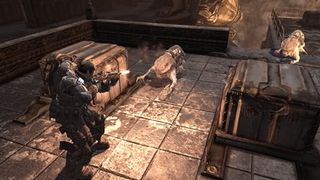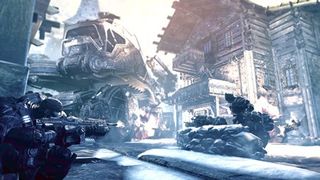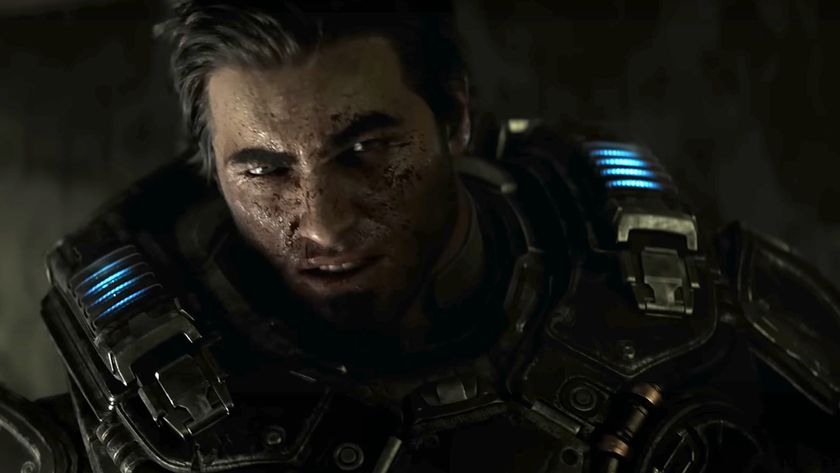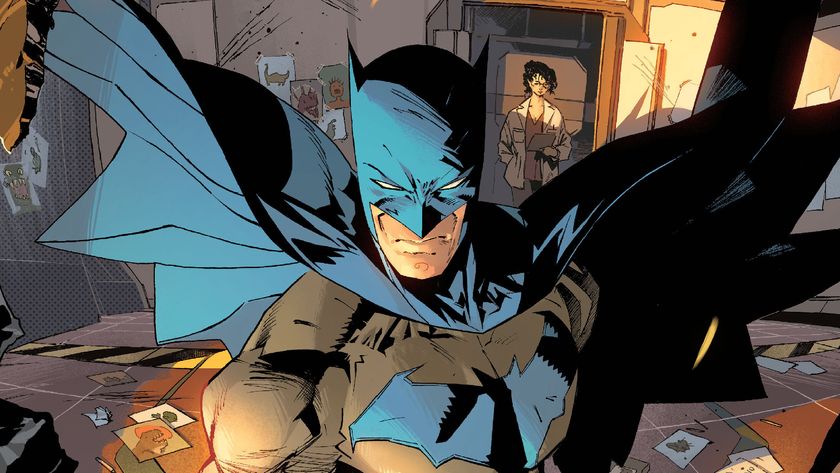Horde: Gears of War 2's most exciting multiplayer addition
We've had five hours with Gears 2's exhilarating five man co-op mode. Here's how it went down...
[This is justone partof this week's mammoth Gears 2 coverage. Make sure to hitthislink to check out what we found when we played through 80% of the game's first act, andherefor our exclusive interview with Cliff Bleszinski.]
If we're being honest, multi-player was the part of the Gears 2 preview day we were looking forward to the least. It's not that we didn't want to play it. But with a healthy fat wedge of brand new Gears of War campaign to play, the promise of getting back into the story after so long away from Sera over-rode everything else like a steamroller over egg shells. A steamroller with chainsaws on the front, driven by a very heavy fat man.
But oh, how wrong we were. We'll level with you right now, Gears Of War 2's new Horde mode is affrontingly addictive. It's one of those "It's so simple, why wasn't it done years ago?" ideas, taking the basic team deathmatch and putting all the players on one side against ever-increasing CPU odds. Imagine Smash TV trapped in the body of Marcus Fenix and you've pretty much got it. Your squad of five human players is dropped into a multiplayer map and given a few seconds to fan out and take position. Then a wave of Locust will come in from the edges of the arena and you'll take them out as a team.

And then the next, tougher wave will come in and you'll do the same again. Indefinitely, until you die. And then you'll hit "Continue" again and again until it's 3 A.M. and you can't focus on the screen any more.
It's the little nuances that do it. Rather than just getting tougher or increasing in number, each Locust wave evolves the way your team has to play and forces a fresh set of tactics. It'll start out innocently enough, with only a few grunts and maybe a couple of Boomers to deal with, but by the time Gears 2's new Locust start being thrown into the fray your crew will be thinking on their toes, rethinking their weaponry and replanning their tactics with every new configuration of opposition. It's exhilarating, requires total focus and adaptability, and doesn't let up for a second.

Then there's the way the game handles player death. Only one player has to survive through a wave in order to earn the entire team a respawn in the next round. As such, the sense of cameraderie is intoxicating, as dead players watch their sole remaining team-mate battle on against immense odds, screaming encouragement for his Arnie-style, one-man stand to meet with success and pull them all through. And the way that eliminated players can watch the match through wide-angled, controllable cameras or patrol the battlefield in a first-person "ghost" view means that the team is never really broken up. Dead comrades are always able to look out for new threats and yell tactical advice and advanced warnings to their man. Heroes can be made in every round of Horde, but it never happens without the help of their fallen squad.
There's also a cool new addition to the recovery process when a player gets knocked down. Now, rather than just waiting for rescue, downed players can make an attempt to (very slowly) crawl to cover. It makes death by nearby Locust foot a little less instant, but the blood trail you'll leave behind will clue in observant enemies on where to look.
Sign up to the 12DOVE Newsletter
Weekly digests, tales from the communities you love, and more
Most Popular







